Heptagonal bipyramid
| Heptagonal bipyramid | |
|---|---|
 | |
| Type | bipyramid |
| Schläfli symbol | { } + {7} |
| Coxeter diagram | |
| Faces | 14 triangles |
| Edges | 21 |
| Vertices | 9 |
| Face configuration | V4.4.7 |
| Symmetry group | D7h, [7,2], (*227), order 28 |
| Rotation group | D7, [7,2]+, (227), order 14 |
| Dual | heptagonal prism |
| Properties | convex, face-transitive |
The heptagonal bipyramid is one of the infinite set of bipyramids, dual to the infinite prisms. If an heptagonal bipyramid is to be face-transitive, all faces must be isosceles triangles.The resulting solid has 14 triangular faces, 9 vertices and 21 edges.[1][2]
Related polyhedra
| Polyhedron | 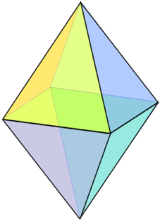 |
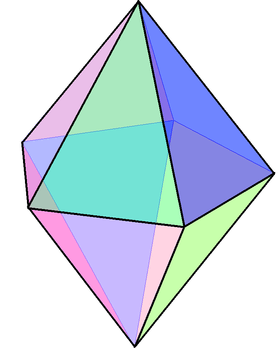 |
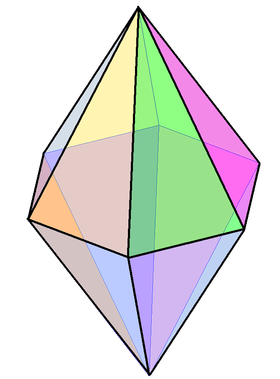 |
 |
 |
 | |||
|---|---|---|---|---|---|---|---|---|---|
| Coxeter | |||||||||
| Tiling |  |
 |
 |
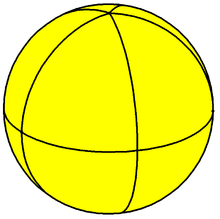 |
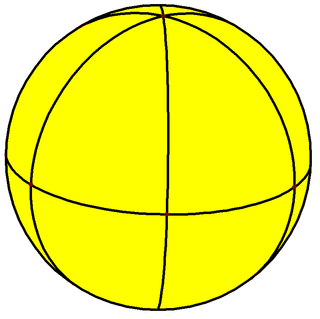 |
 |
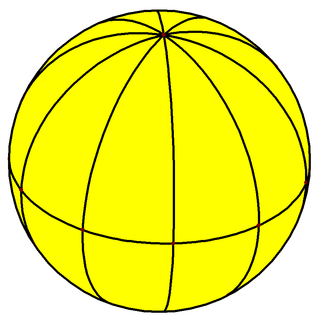 | ||
| Config. | V2.4.4 | V3.4.4 | V4.4.4 | V5.4.4 | V6.4.4 | V7.4.4 | V8.4.4 | V9.4.4 | V10.4.4 |
References
- ↑ Heptagonal Dipyramid dmccooey.com [2014-6-23]
- ↑ Pugh, Anthony (1976), Polyhedra: A Visual Approach, University of California Press, pp. 21, 27, 62, ISBN 9780520030565.
External links
- Olshevsky, George. "Bipyramid". Glossary for Hyperspace. Archived from the original on 4 February 2007.
- Virtual Reality Polyhedra The Encyclopedia of Polyhedra
- VRML models <7>
- Conway Notation for Polyhedra Try: dP7
This article is issued from Wikipedia - version of the 10/18/2016. The text is available under the Creative Commons Attribution/Share Alike but additional terms may apply for the media files.